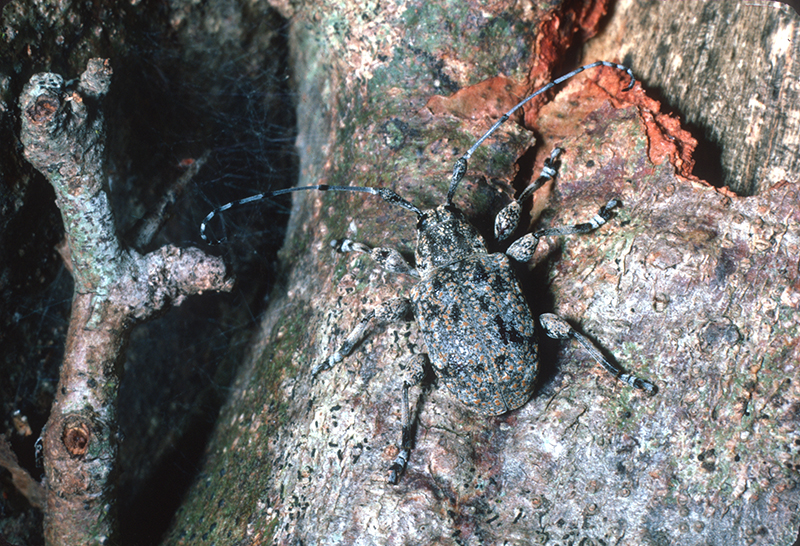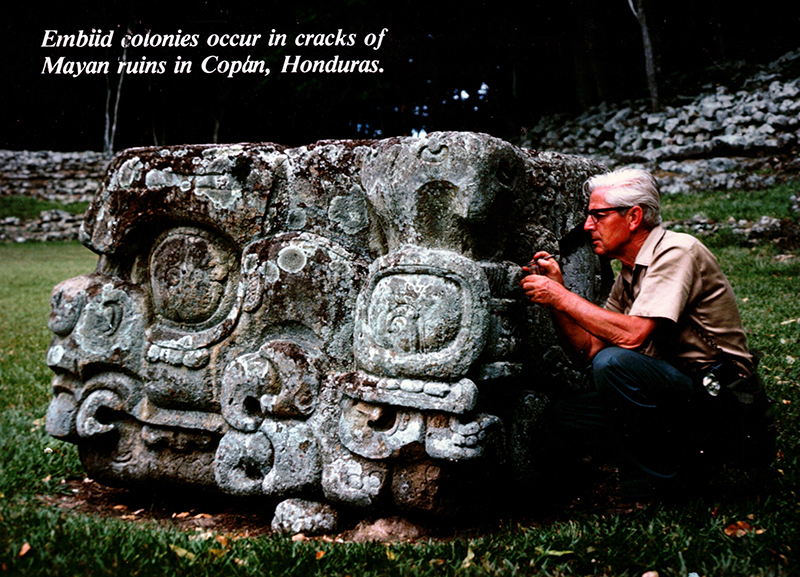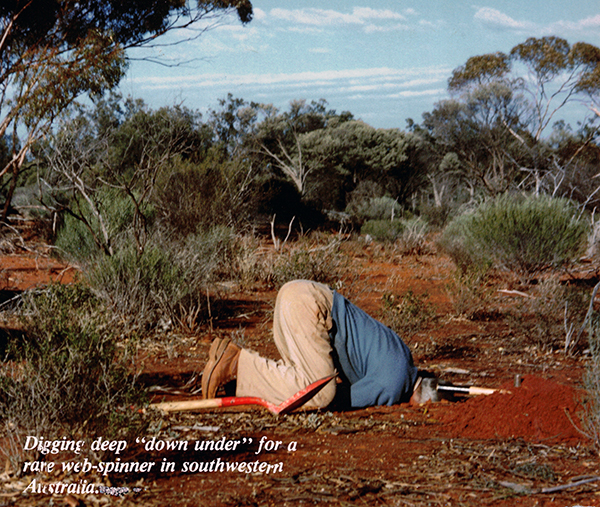Most insects are very small and cryptic, often escaping notice by the casual observer. Yet these tiny animals make up the bulk of biological diversity on the planet, pollinating our crops and native plants, decomposing organic matter, occupying key nodes in food webs, and acting as weather vanes of climate and land use changes, as well as vectoring diseases and reducing crop and orchard yields.
High resolution, focus-stacked imaging allows us to see not only the tiniest of insects, but also the minute features of larger insects. The Essig Museum of Entomology uses several different imaging system to photograph specimens. We use a Leica S9i digital microscope with Leica Application Suite software (purchased with funds generously donated by Vince & Cheryl Resh) for both specimen imaging, such as the flea slide example below, as well as giving digital tours of the museum via Zoom.
The Essig Museum also uses a MacroPod camera system (Macroscopic Solutions), purchased as part of our collaborative Big Bee grant from NSF to digitize the museum’s extensive bee collection. Using a programmable focus rail, indirect lighting, and Zerene stacker software we are taking hi-res, deep focus photographs of representatives of each species of bee and moth in the Essig collection. These photographs also provide training sets to autamated insect identification systems liked those used in iNaturalist and Google Lens.


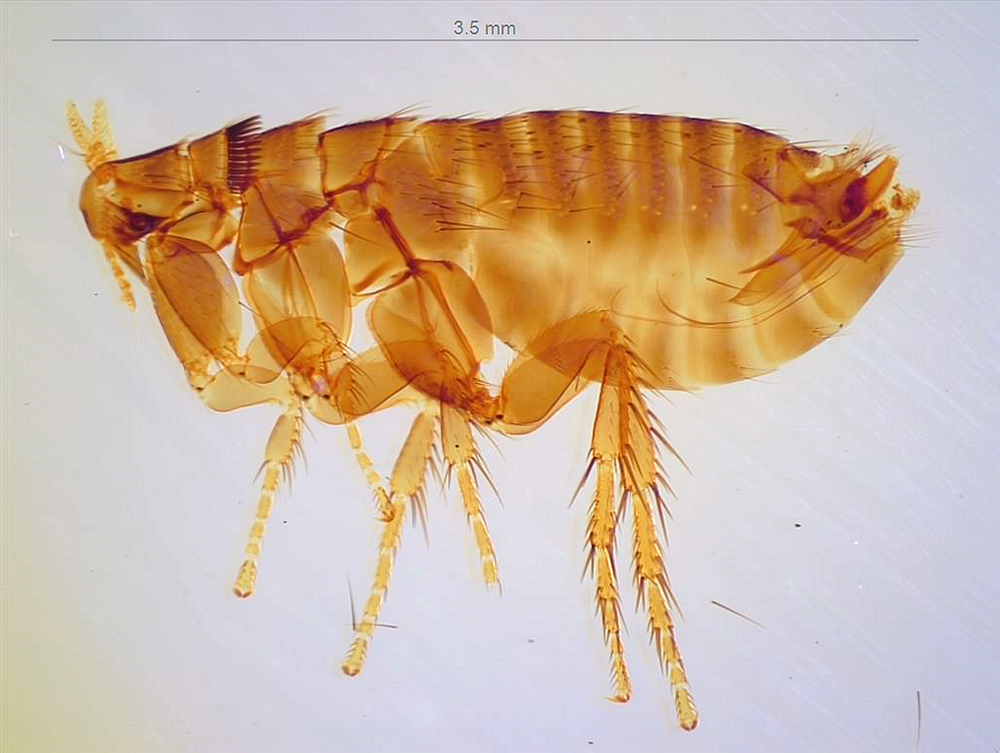

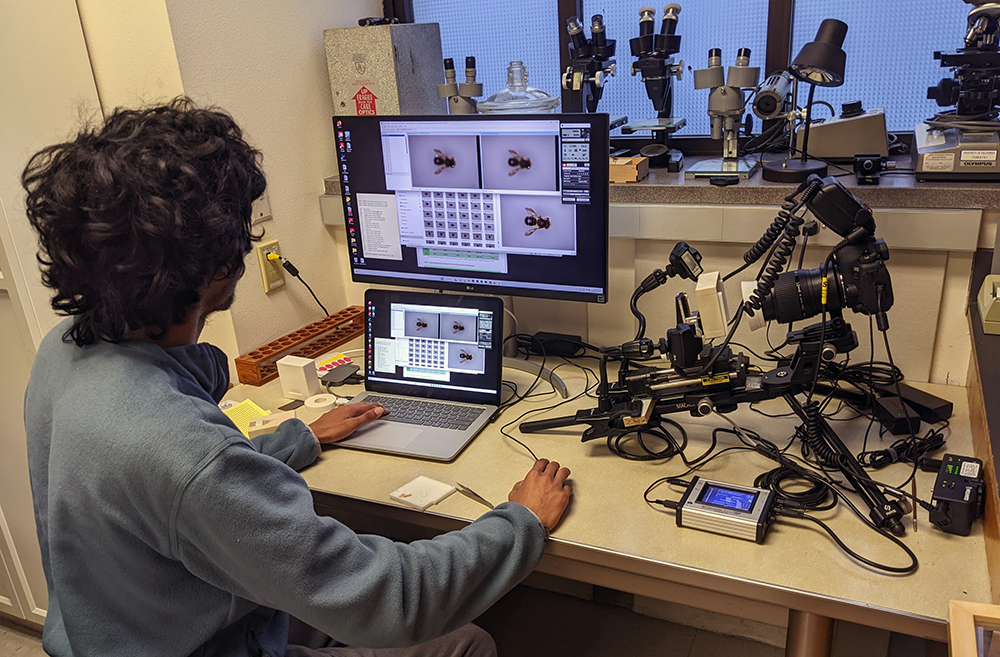
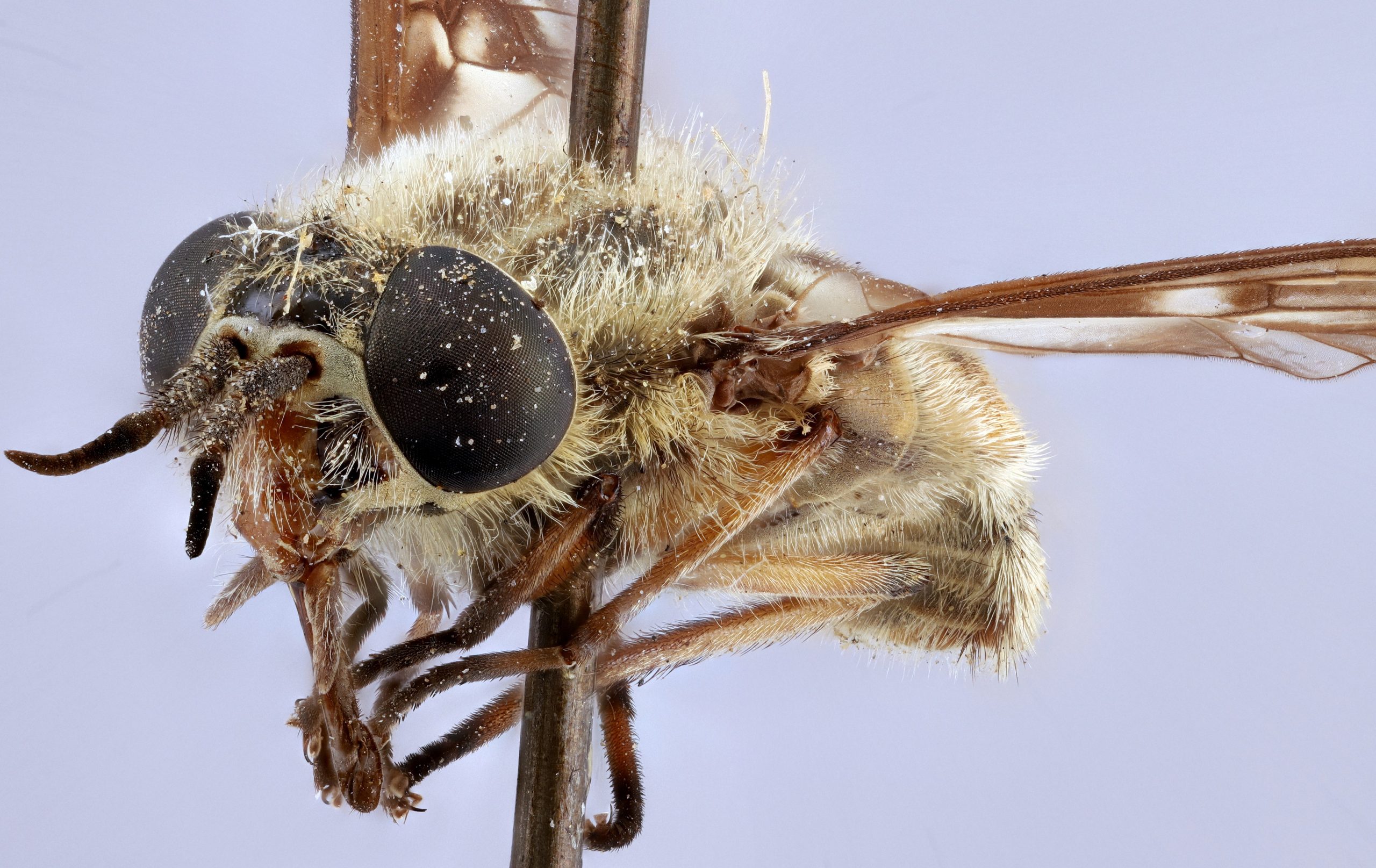
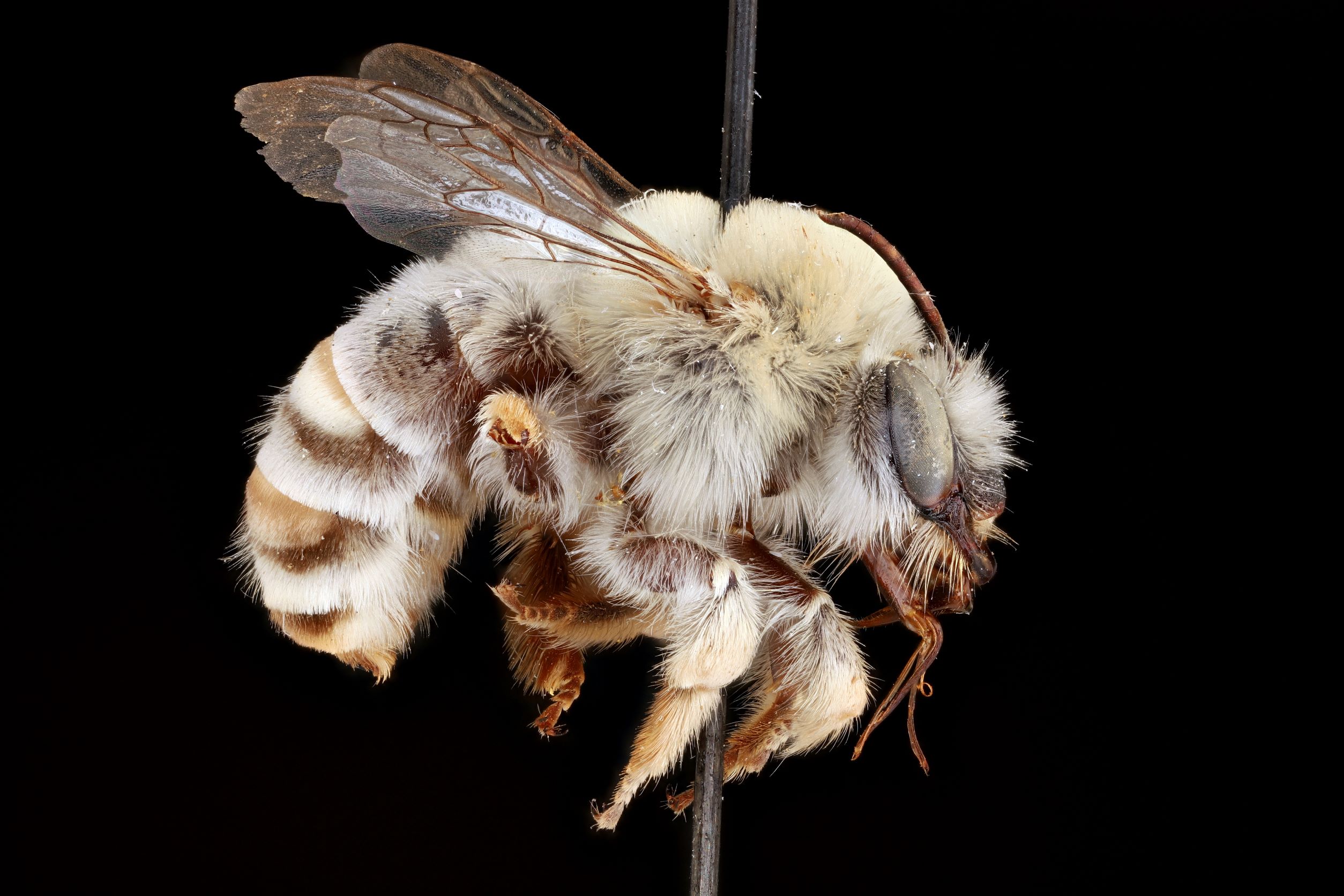
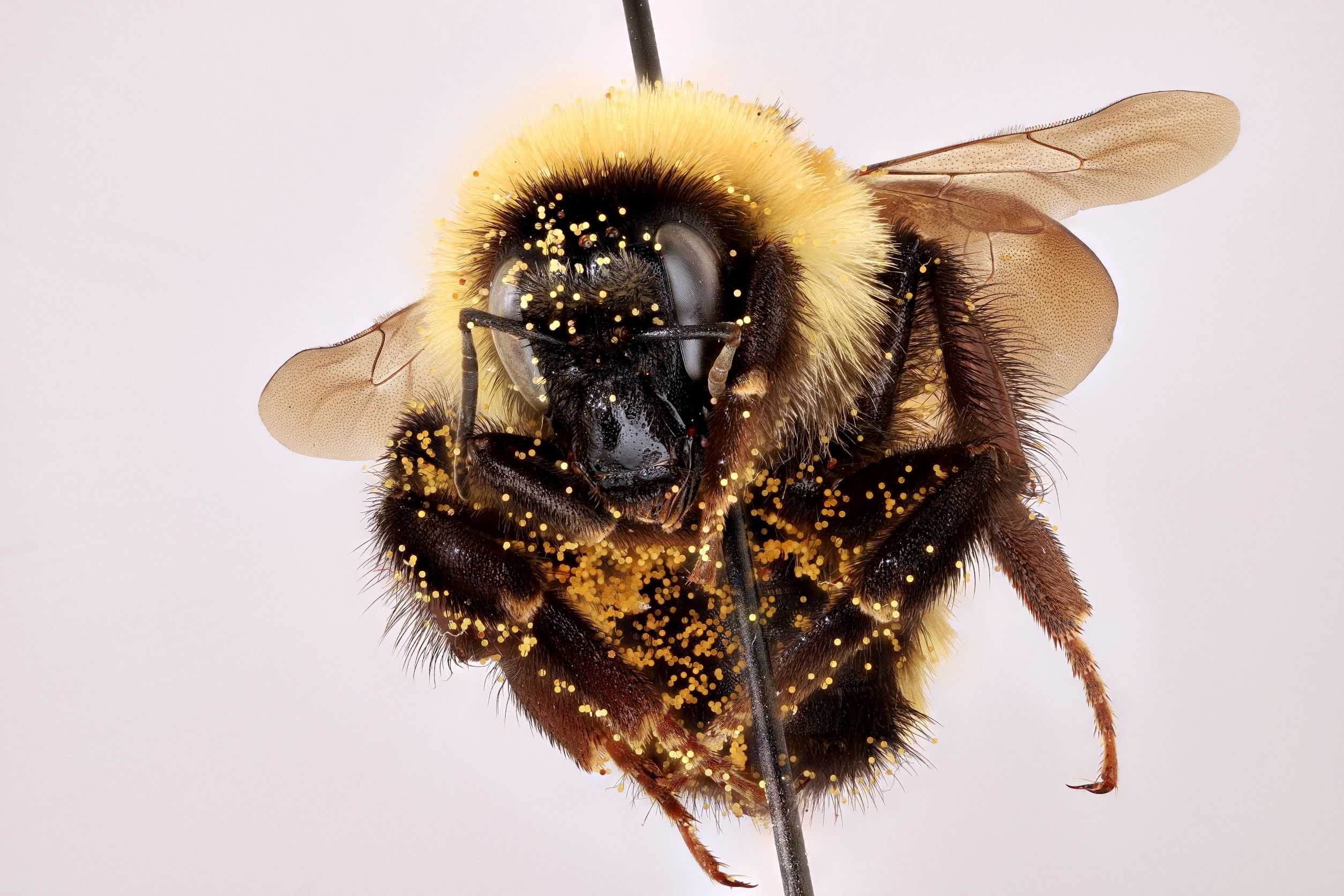
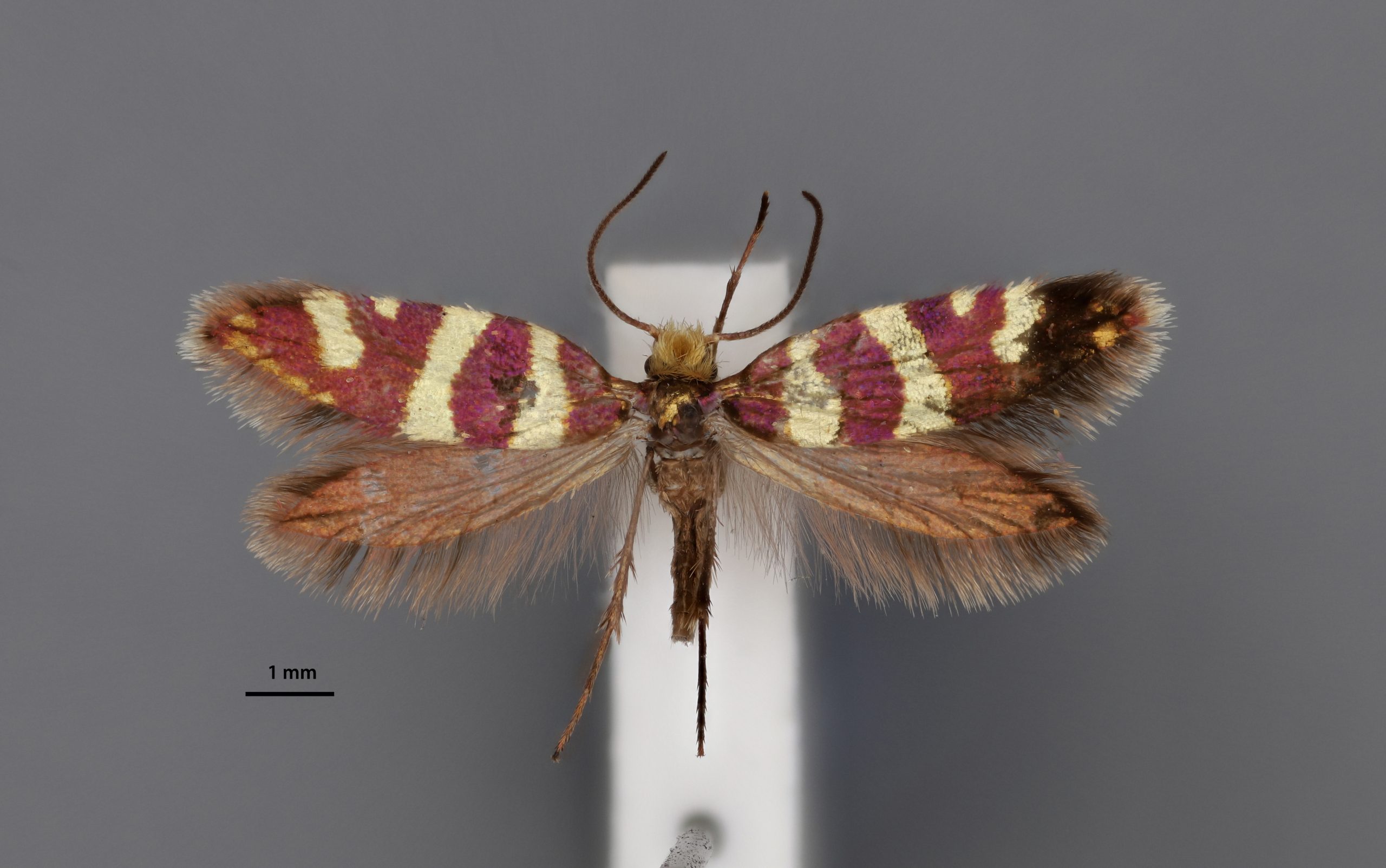
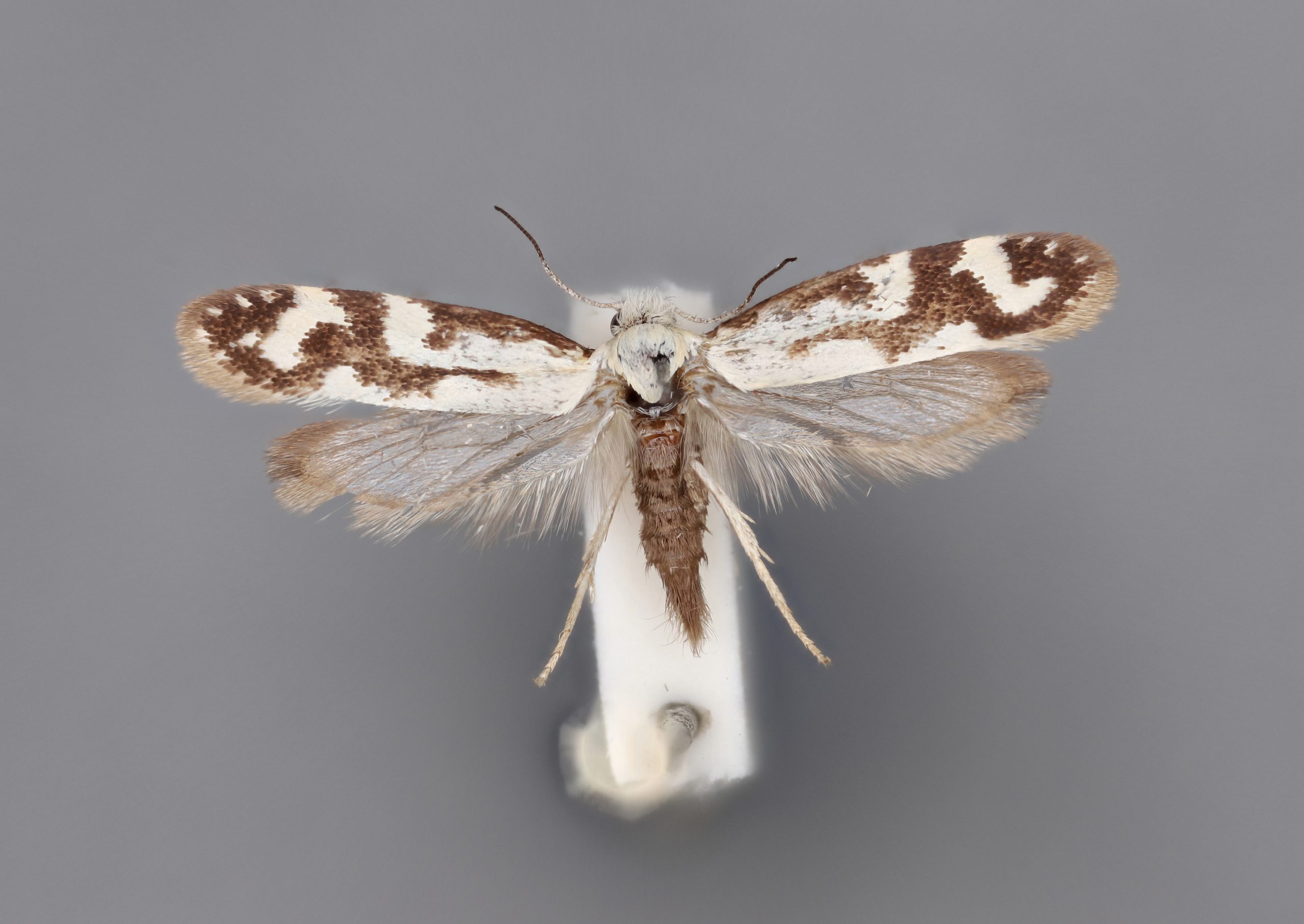
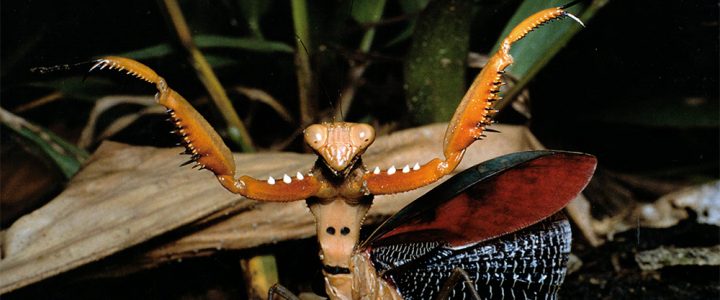

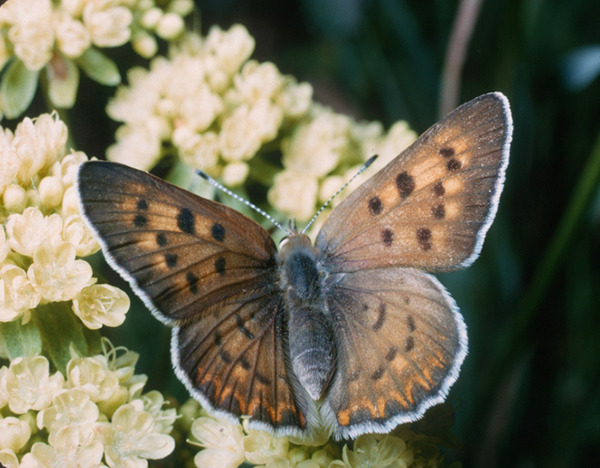 Edward S. Ross (1915-2016) was a pioneer of close up photography. Ed received his PhD in 1941 with the Department of Entomology at UC Berkeley, where he was a teaching assistant for E.O. Essig. Before finishing his degree he was offered the position of Curator of Entomology at the California Academy of Sciences in San Francisco in 1939, and two years later became chair of the entomology department, a position he held for 41 years. Initially Ed was interested in Histerid beetles, but soon switched to webspinners (Embiidina), a group for which little was known at the time. His studies took him around the world, particularly to the tropics where webspinners are most diverse. During his travels Ed photographed arthropods, plants, mammals, people, and natural landscapes. His images appeared in numerous publications including National Geographic Magazine, Insects Close Up, and Insects and Plants. In 2018, Ed’s collection of ~100,000 35mm slides were generously donated to the Essig Museum of Entomology by his wife, Sandra Miller Ross, to be digitized and made available for research, education, and outreach. Once digitized, the images will be available through
Edward S. Ross (1915-2016) was a pioneer of close up photography. Ed received his PhD in 1941 with the Department of Entomology at UC Berkeley, where he was a teaching assistant for E.O. Essig. Before finishing his degree he was offered the position of Curator of Entomology at the California Academy of Sciences in San Francisco in 1939, and two years later became chair of the entomology department, a position he held for 41 years. Initially Ed was interested in Histerid beetles, but soon switched to webspinners (Embiidina), a group for which little was known at the time. His studies took him around the world, particularly to the tropics where webspinners are most diverse. During his travels Ed photographed arthropods, plants, mammals, people, and natural landscapes. His images appeared in numerous publications including National Geographic Magazine, Insects Close Up, and Insects and Plants. In 2018, Ed’s collection of ~100,000 35mm slides were generously donated to the Essig Museum of Entomology by his wife, Sandra Miller Ross, to be digitized and made available for research, education, and outreach. Once digitized, the images will be available through 